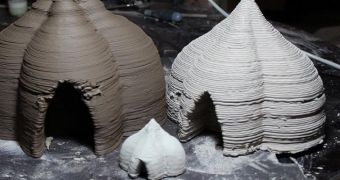Housing, food scarcity and substandard medicine are serious problems for third world countries, and they will take a long time to fix, if they are ever to be fixed. Housing, however, might go over better than the other two, thanks to 3D printing.
Certainly, there are plenty of people exploring the possibilities of 3D-printed food, 3D-printed drugs, 3D-printed organic tissue, even 3D-printed utensils.
However, it will take at least a few more years before the applications of current theories become possible and safe enough for human treatments.
Houses are easier to make, as they don't need microscopic precision, nor are there any health-related worries in regards to the materials that 3D-printed homes can be made from.
That is why the group known as the WASProject (World’s Advanced Saving Project) has put forward the idea of homes 3D printed from native soil.
WASProject is a company based in Italy. A maker of 3D printers, it has created the POWERWASP 3D printer / CNC milling all-in-one machine, plus the DeltaWASP printer which is more “normal,” but can use many more materials than the usual plastics.
Its next order of business, or one of them, is to make a large Delta Robot 3D printer that can create huge objects like housing models and, of course, housing structures, all the while using materials easily found in nature: clay, soil, natural powders, etc.
The materials may or may not be mixed with resin, depending on their cohesion and durability. Either way, the price of each print will be very low, and the time it will take to build a home will be cut dramatically.
WASP has actually been working on the Big Delta 3D printer for a couple of years. The printer can already create large objects out of soil, as it was proven in Marrakech at the 2013 “biennale.” They printed out projects by local architects using a mix of sand, water and vegetable oil.
Just the prospect of solving the third-world countries housing problem is enticing enough on its own, but the Big Delta printer could conceivably be used for many other things, like ovens, sheds, outhouses, fence support structures, hearths, etc. Unfortunately, no date has been set, or even a vague ETA given (estimated time of arrival) for when this initiative will kick off.
In theory, it all could immediately be set in motion, since target countries don't care about how well the house looks on the outside, not nearly to the same extent as, let’s say, the US or EU, not to mention wonders of architecture like the city of Dubai (where an indoor neighborhood with man-controlled weather is being built, of all things).

 14 DAY TRIAL //
14 DAY TRIAL //